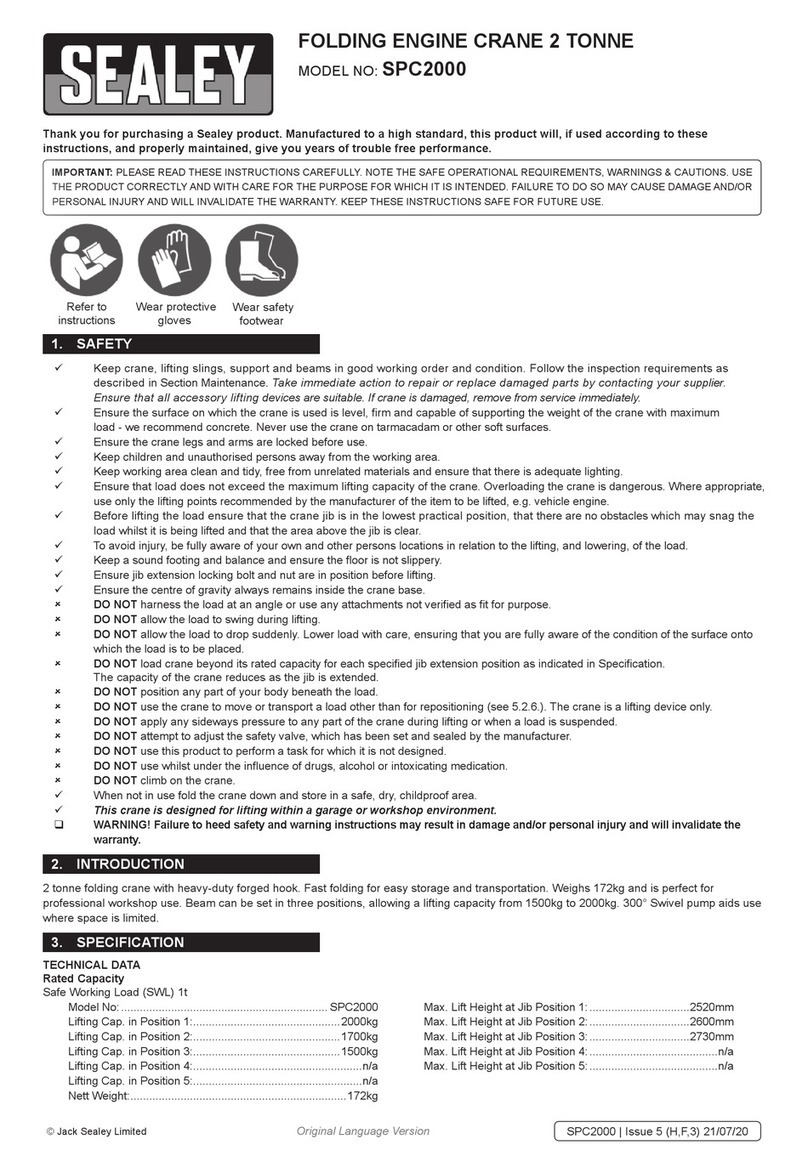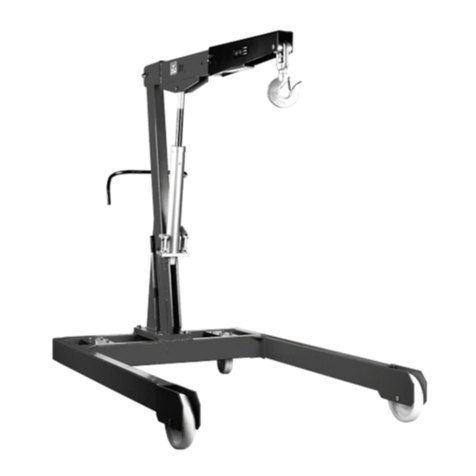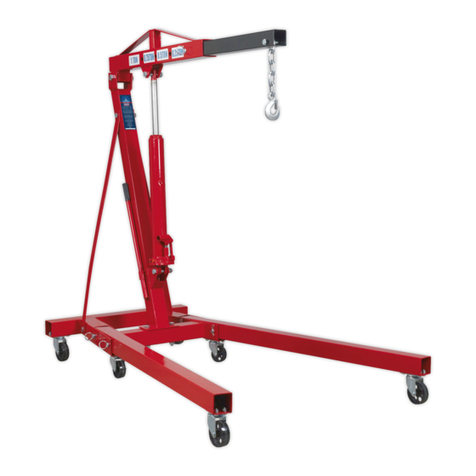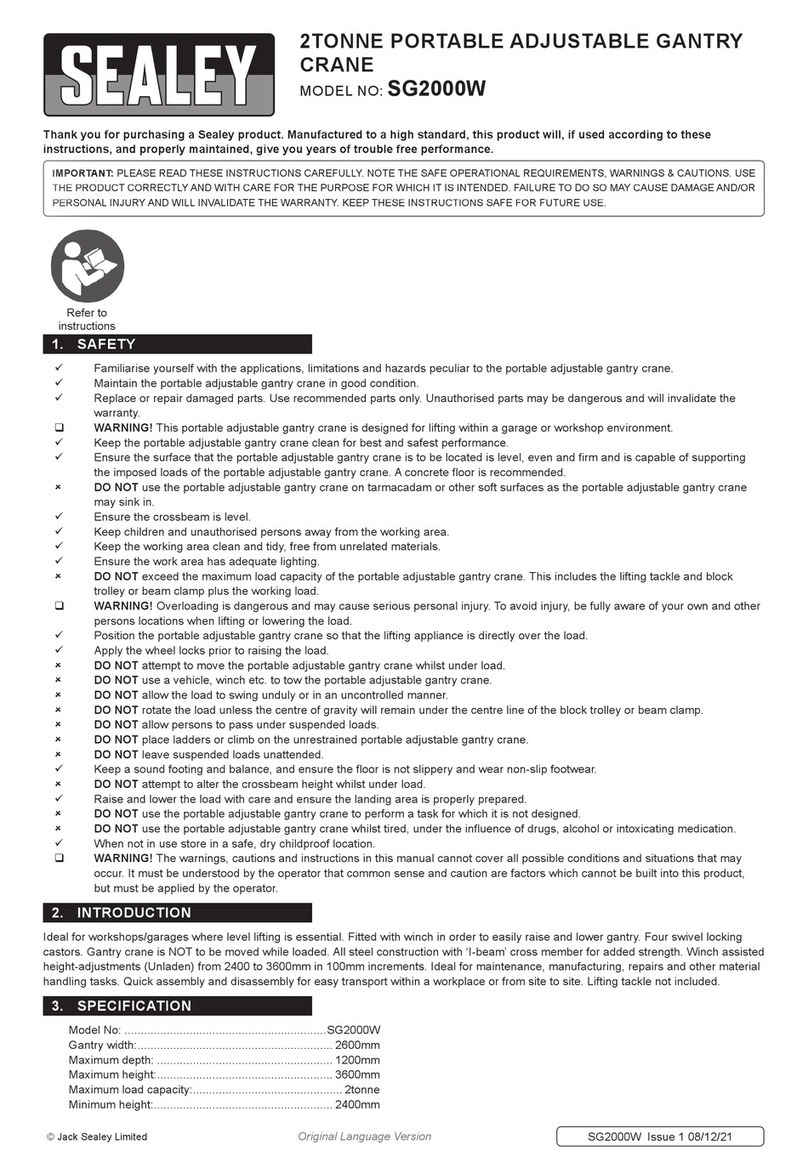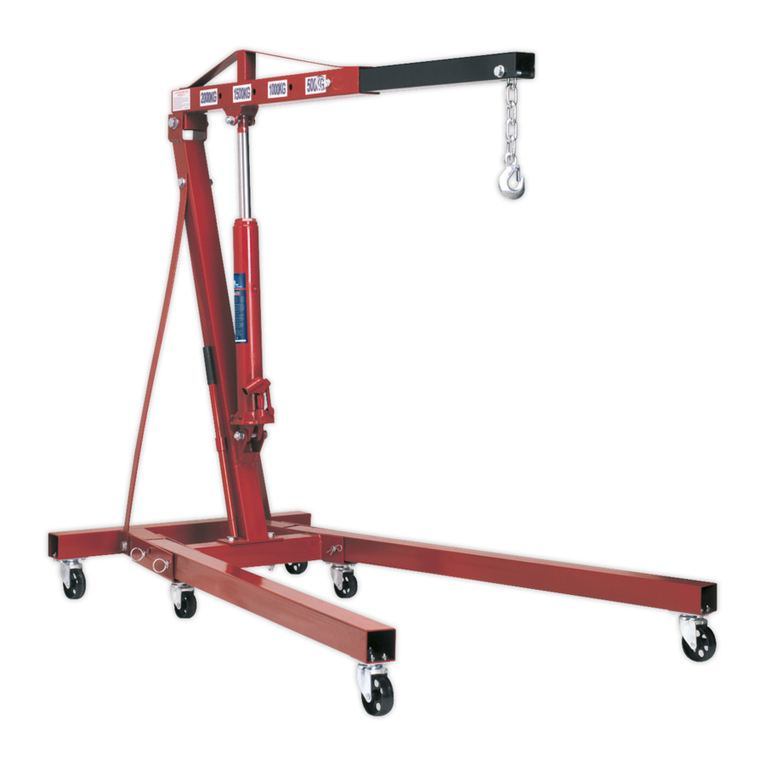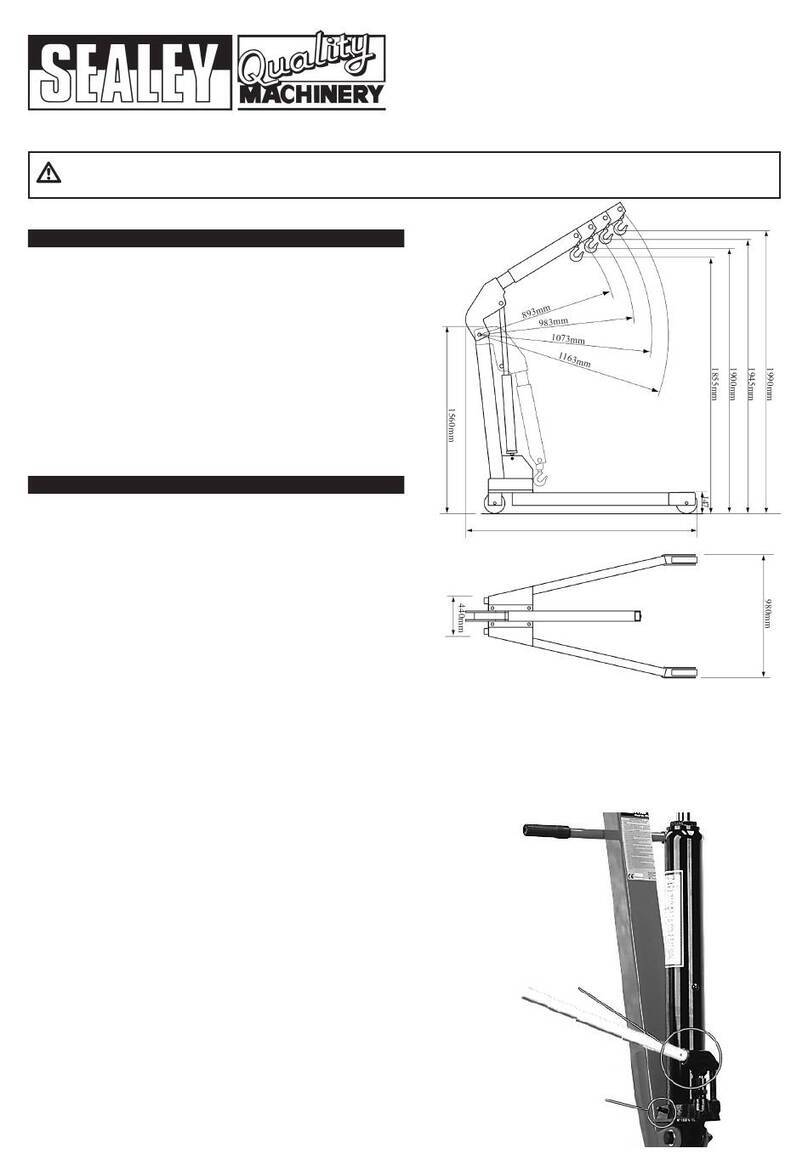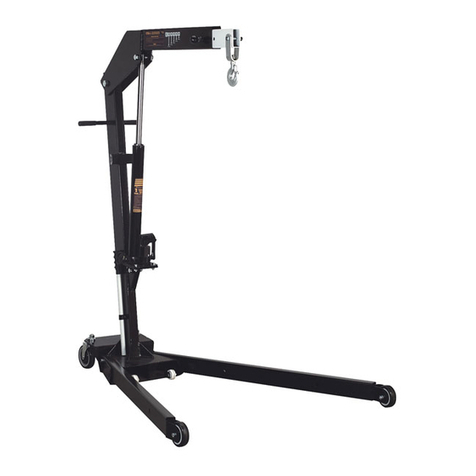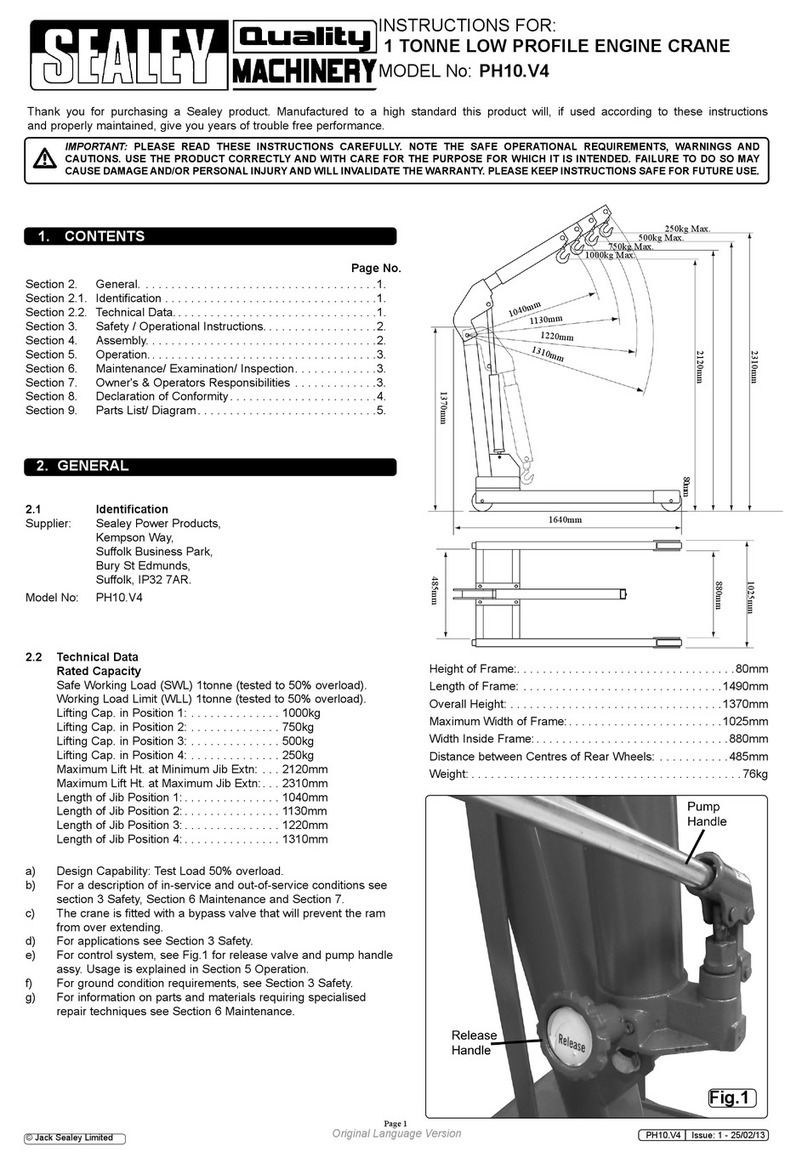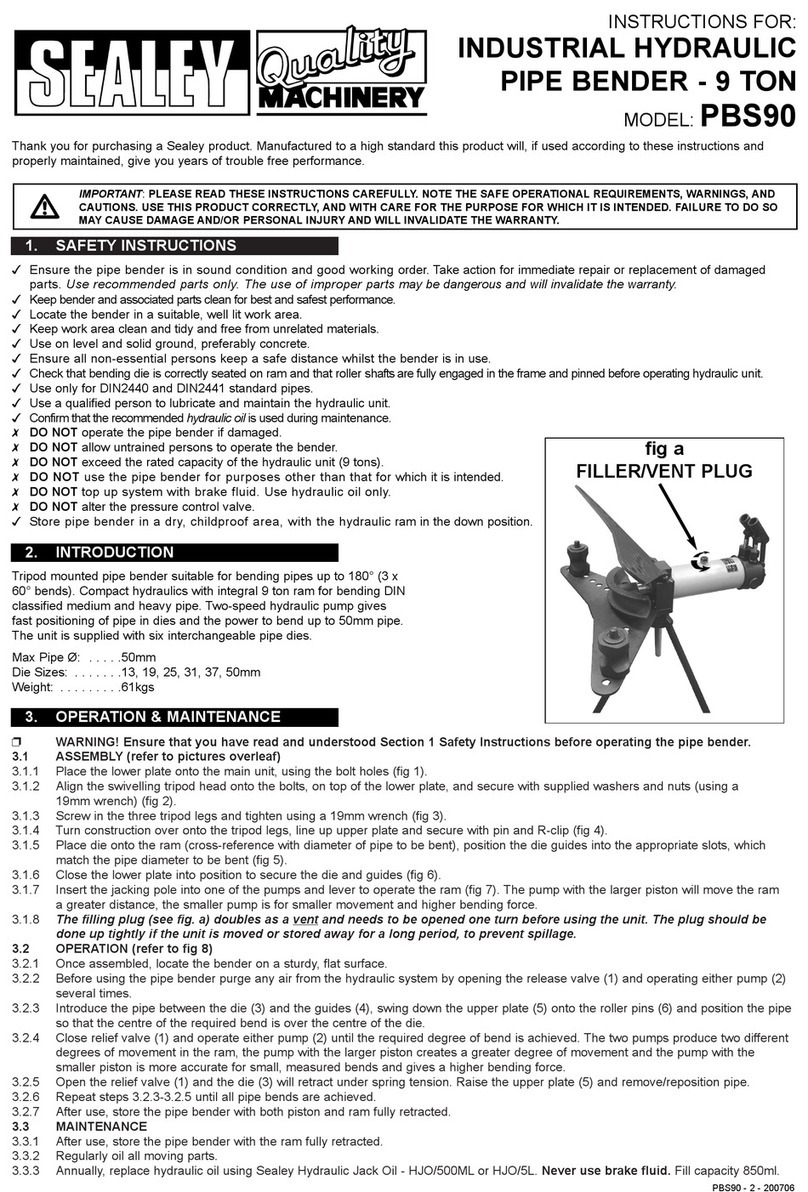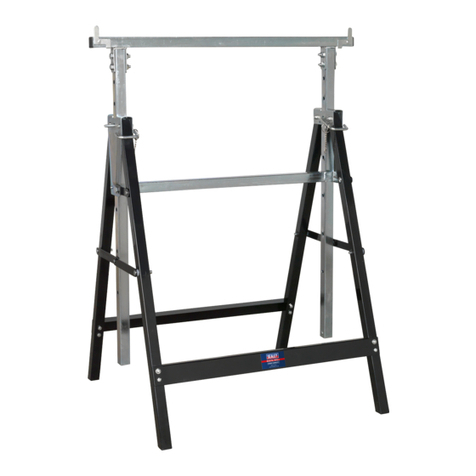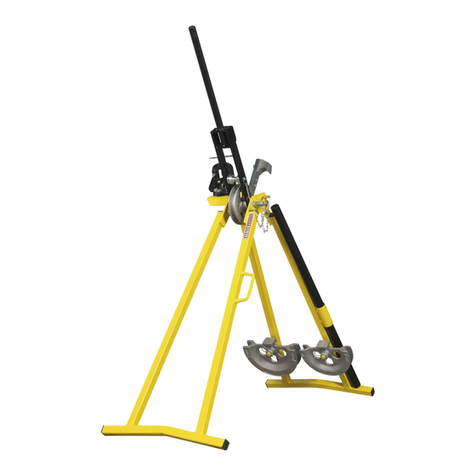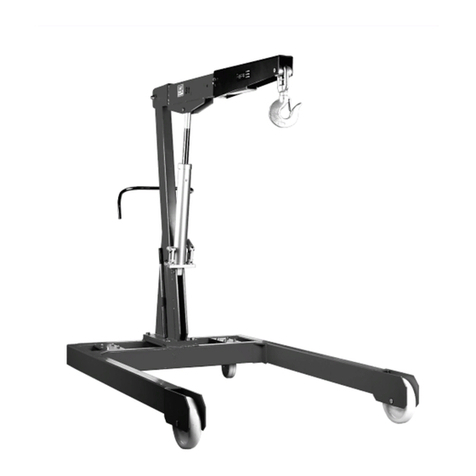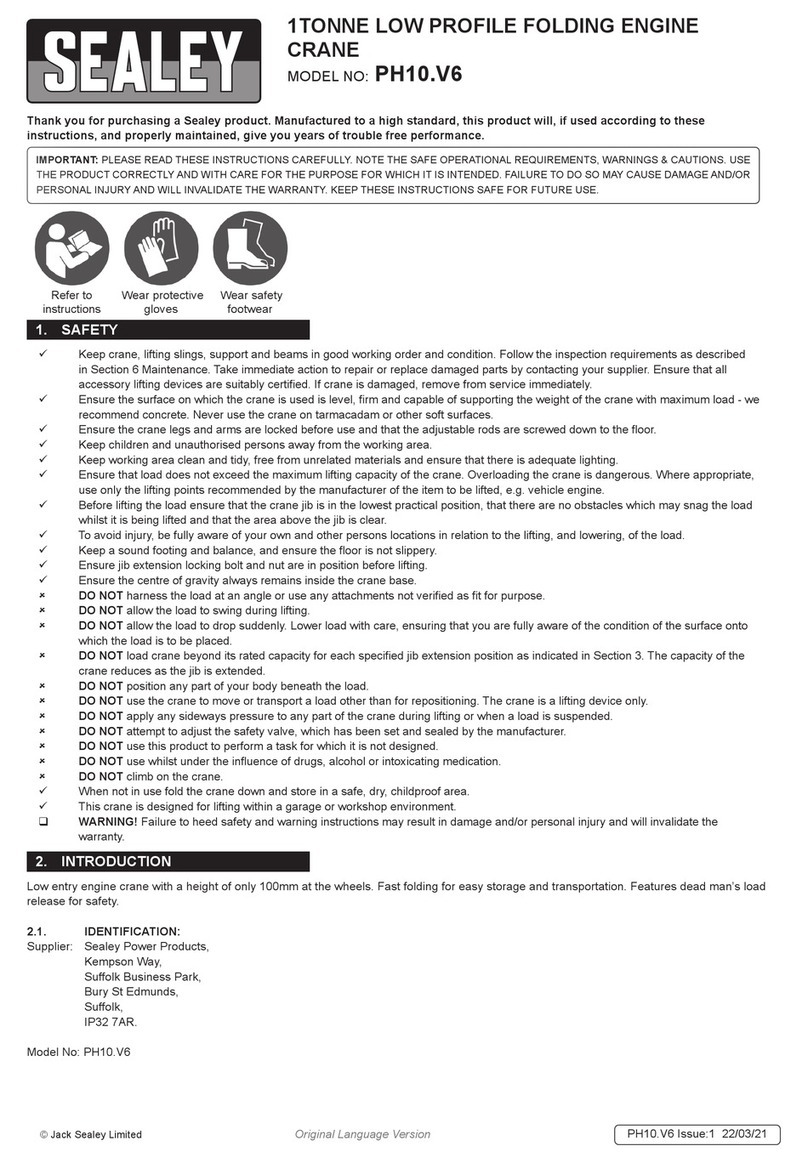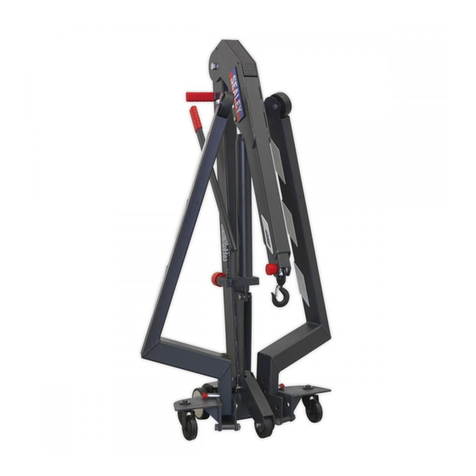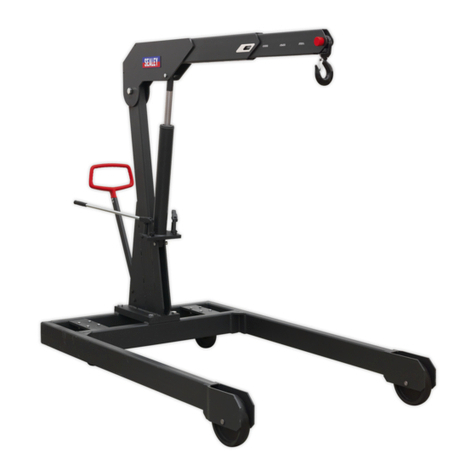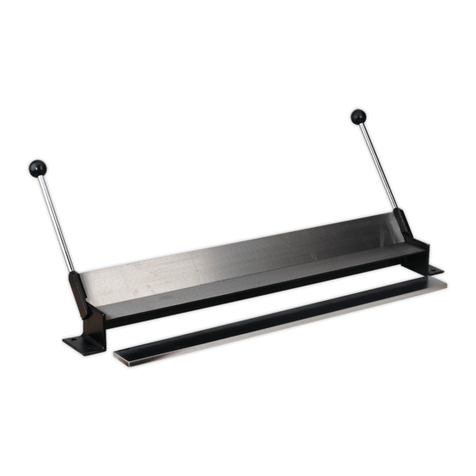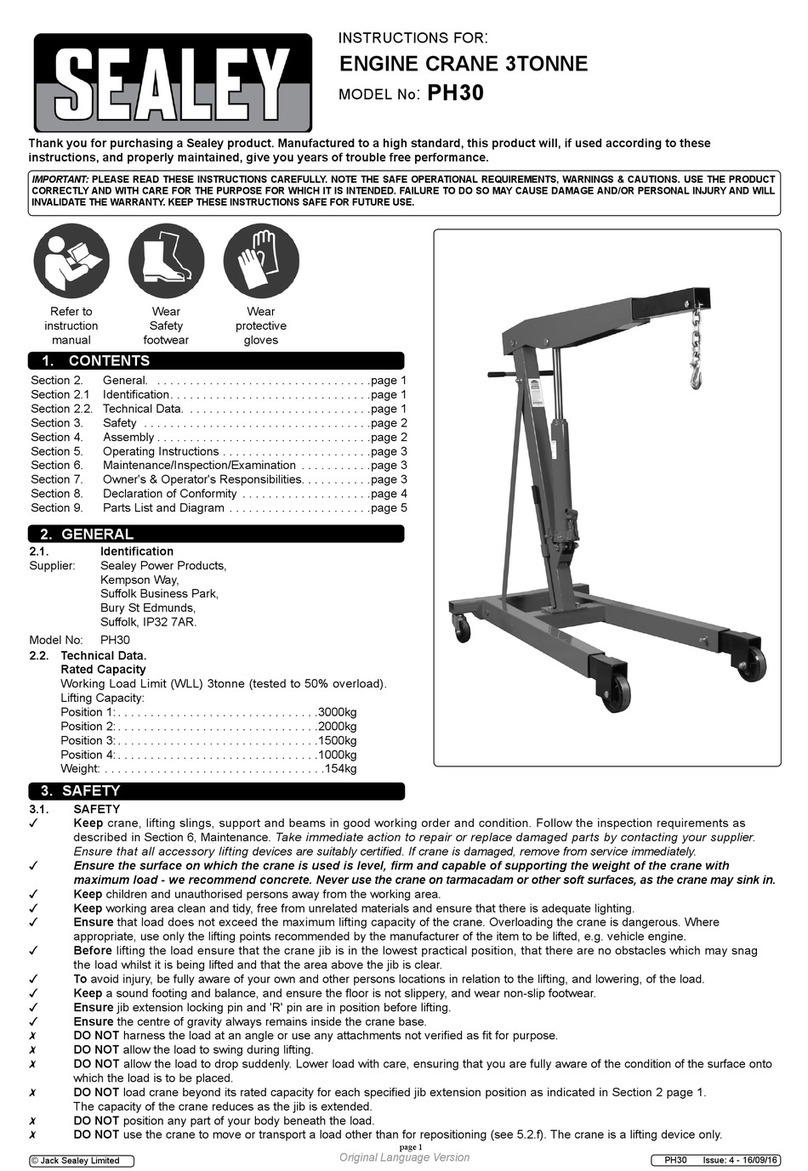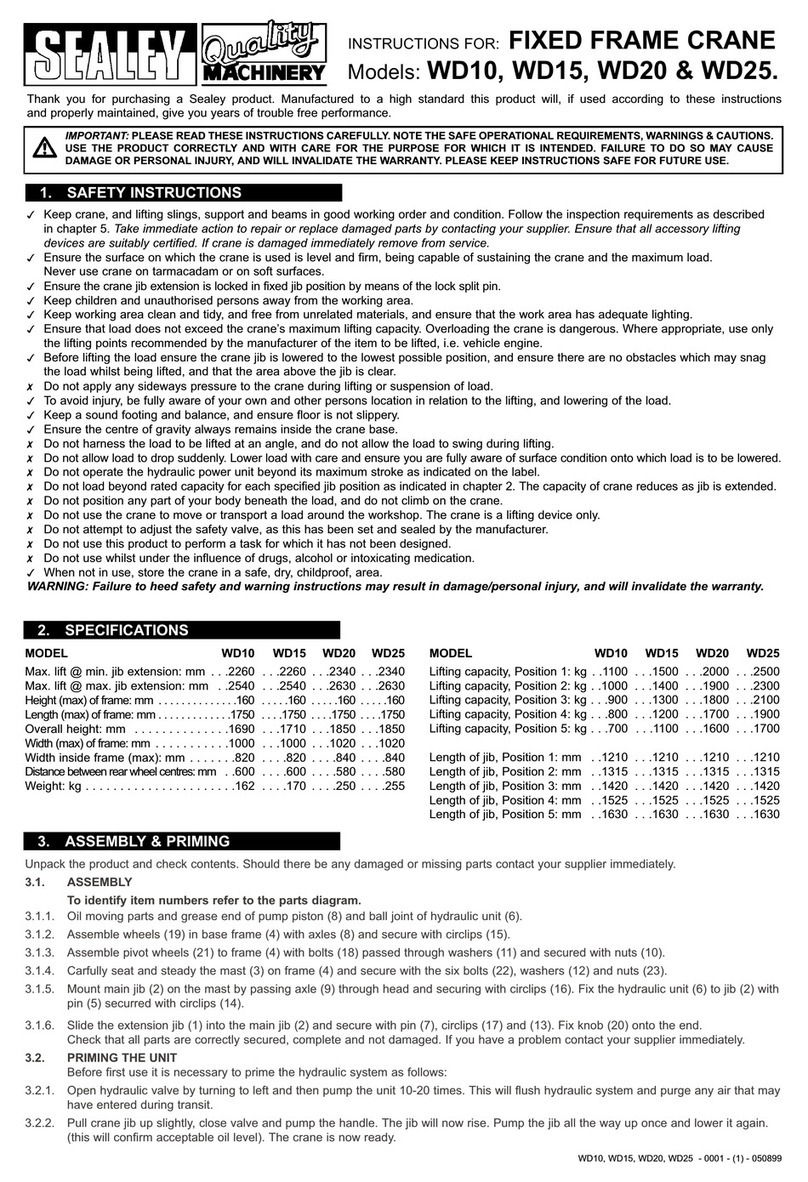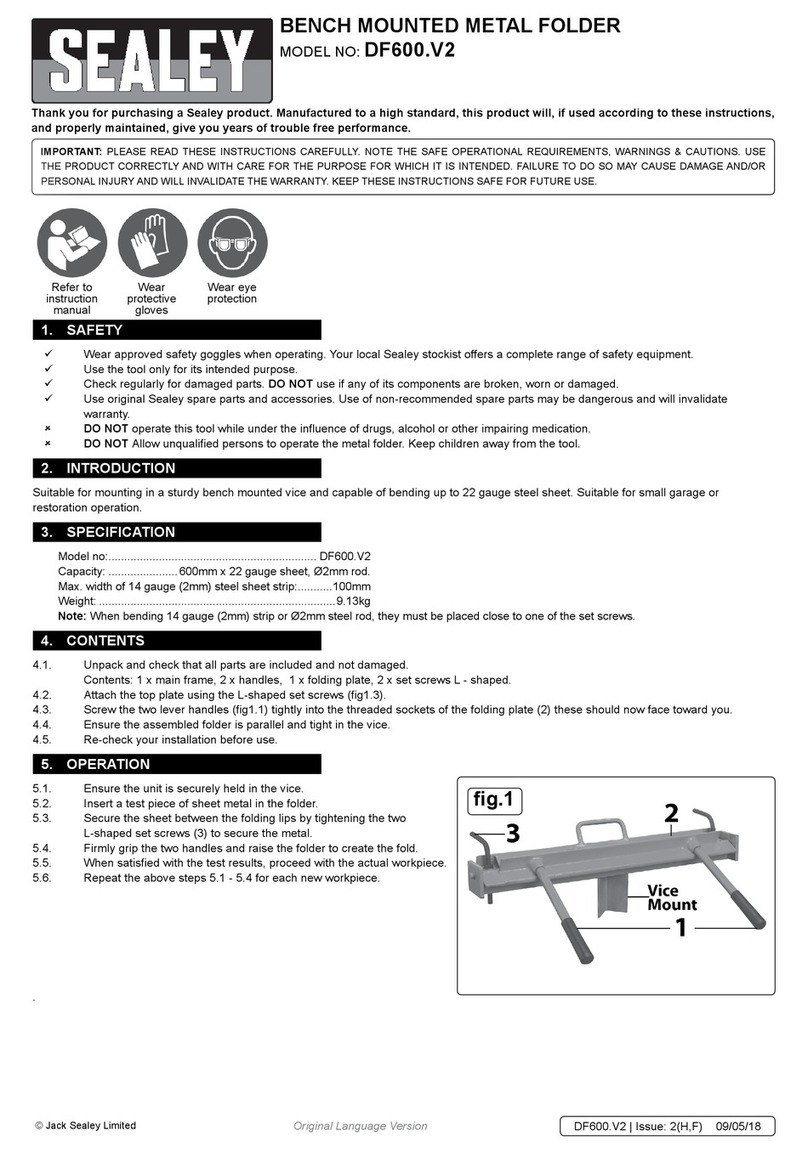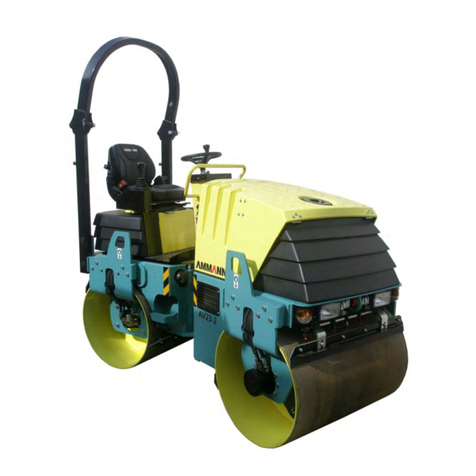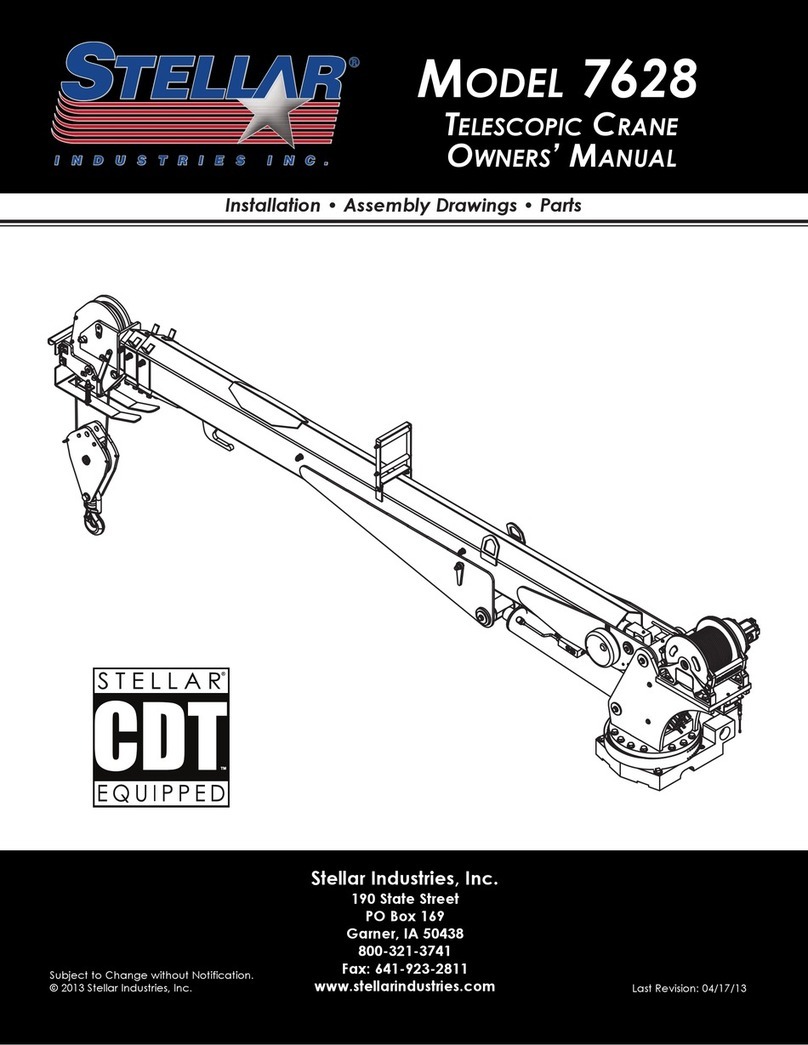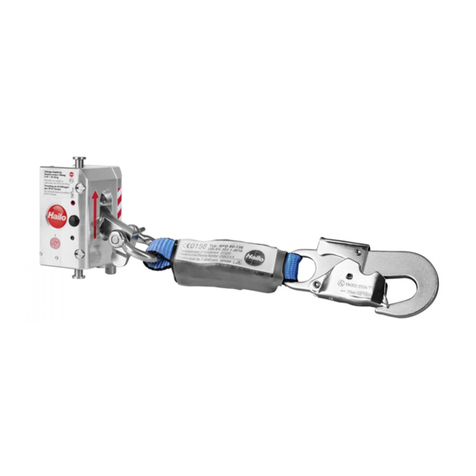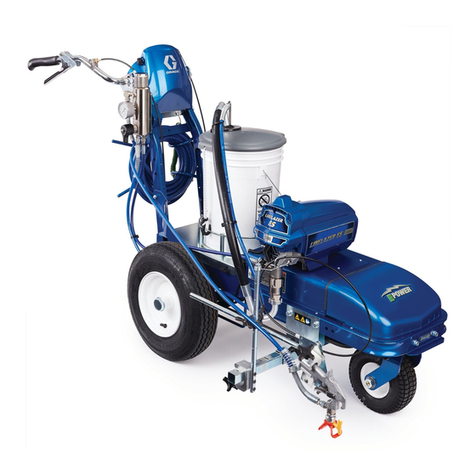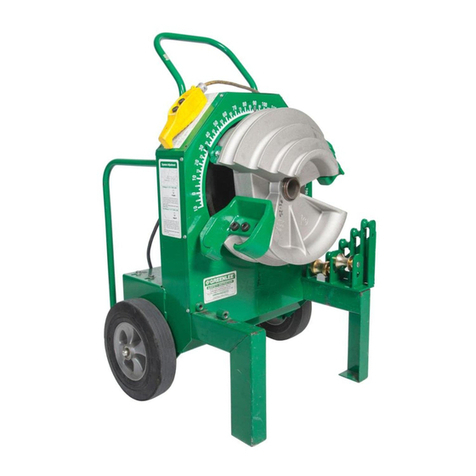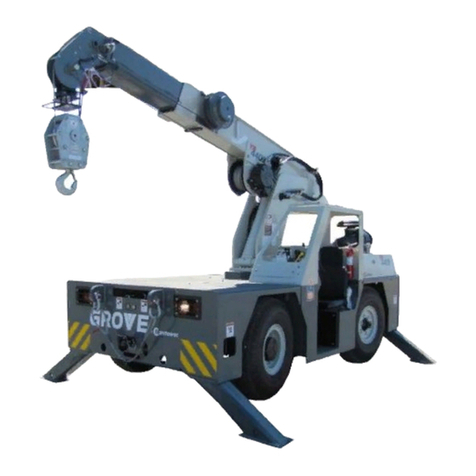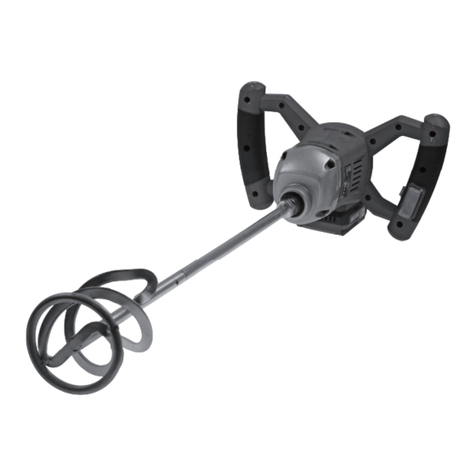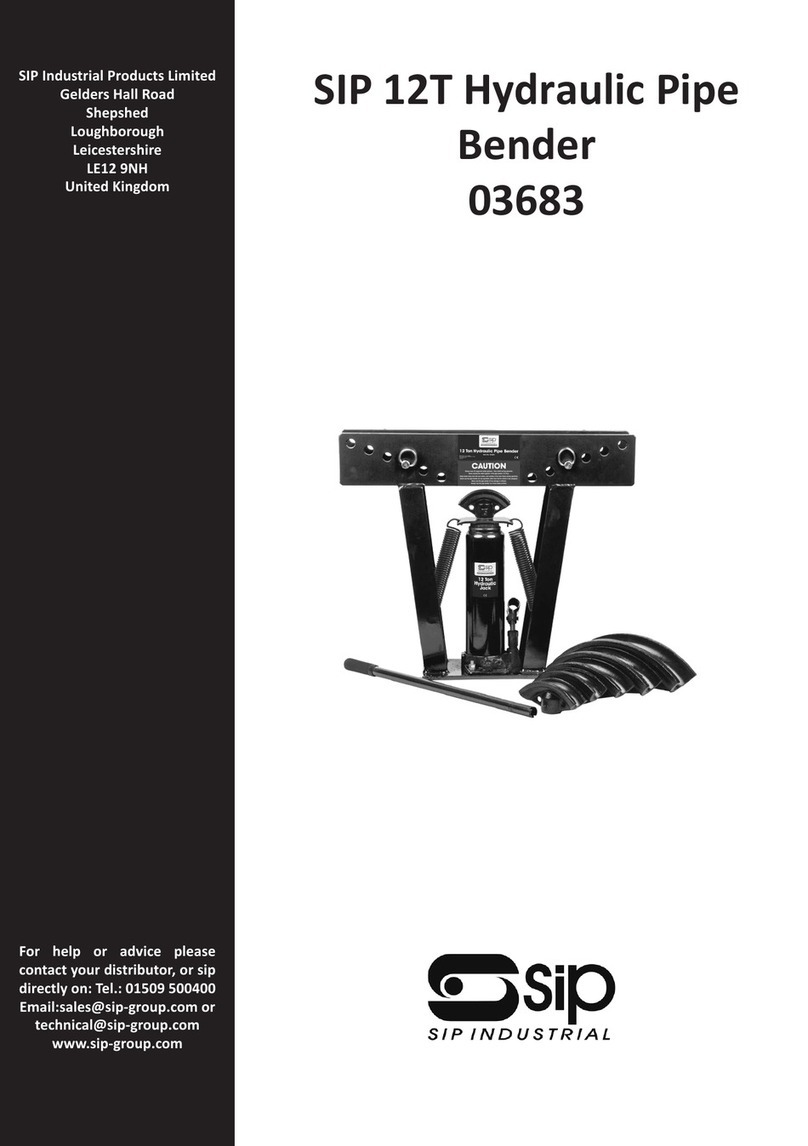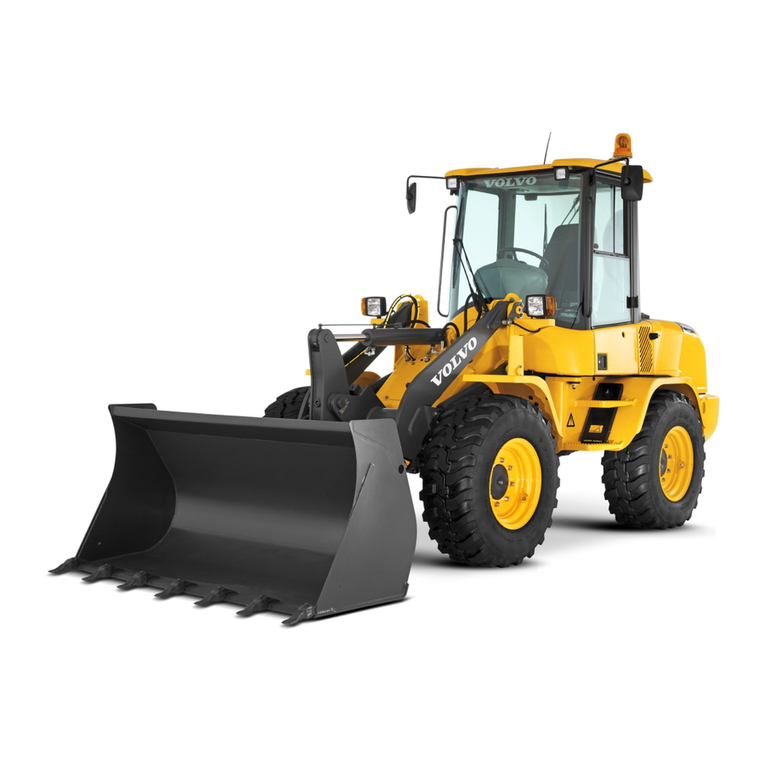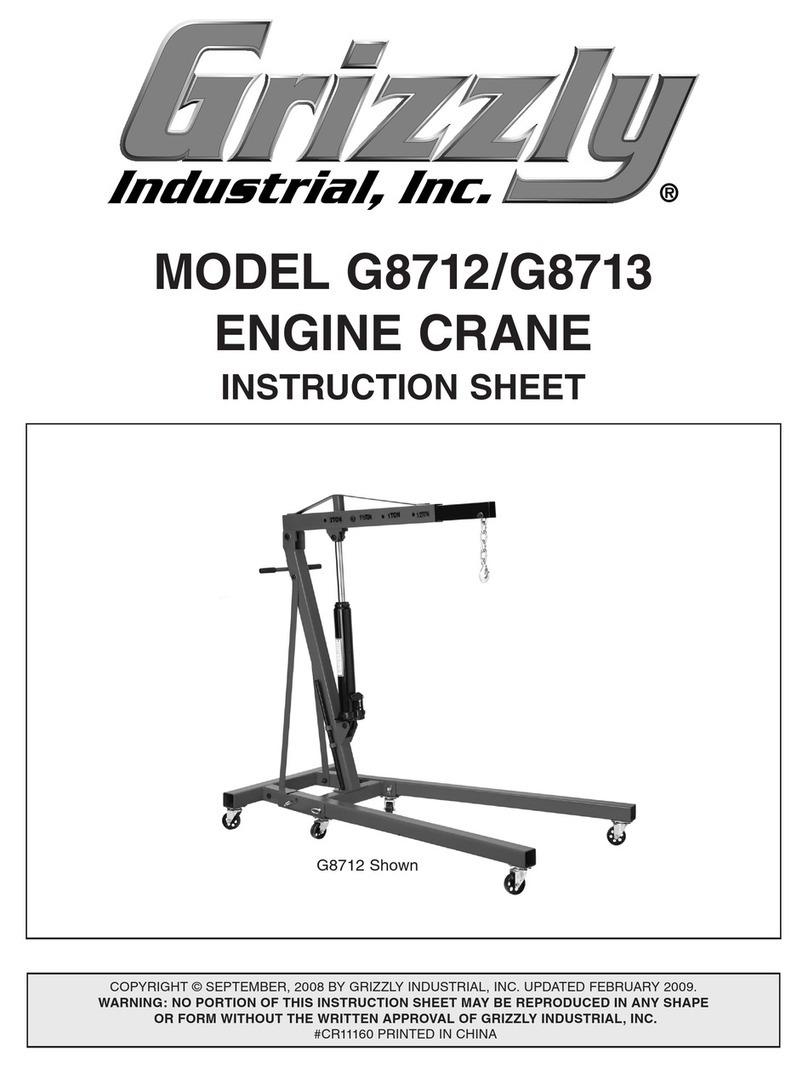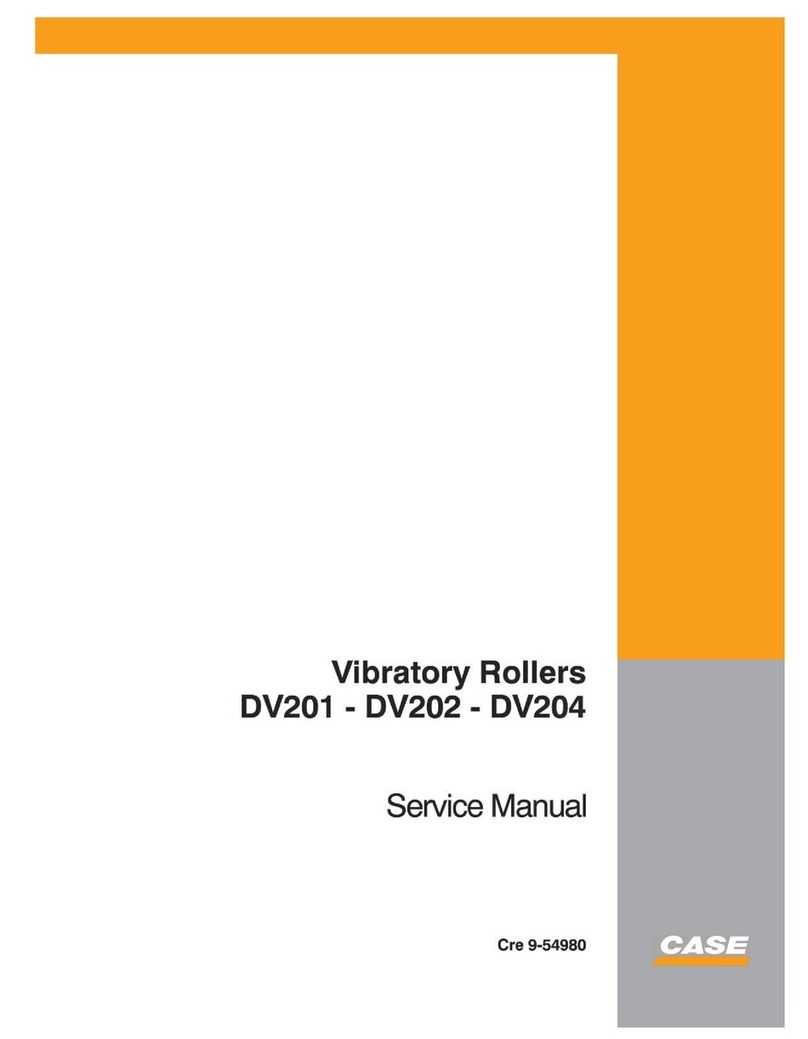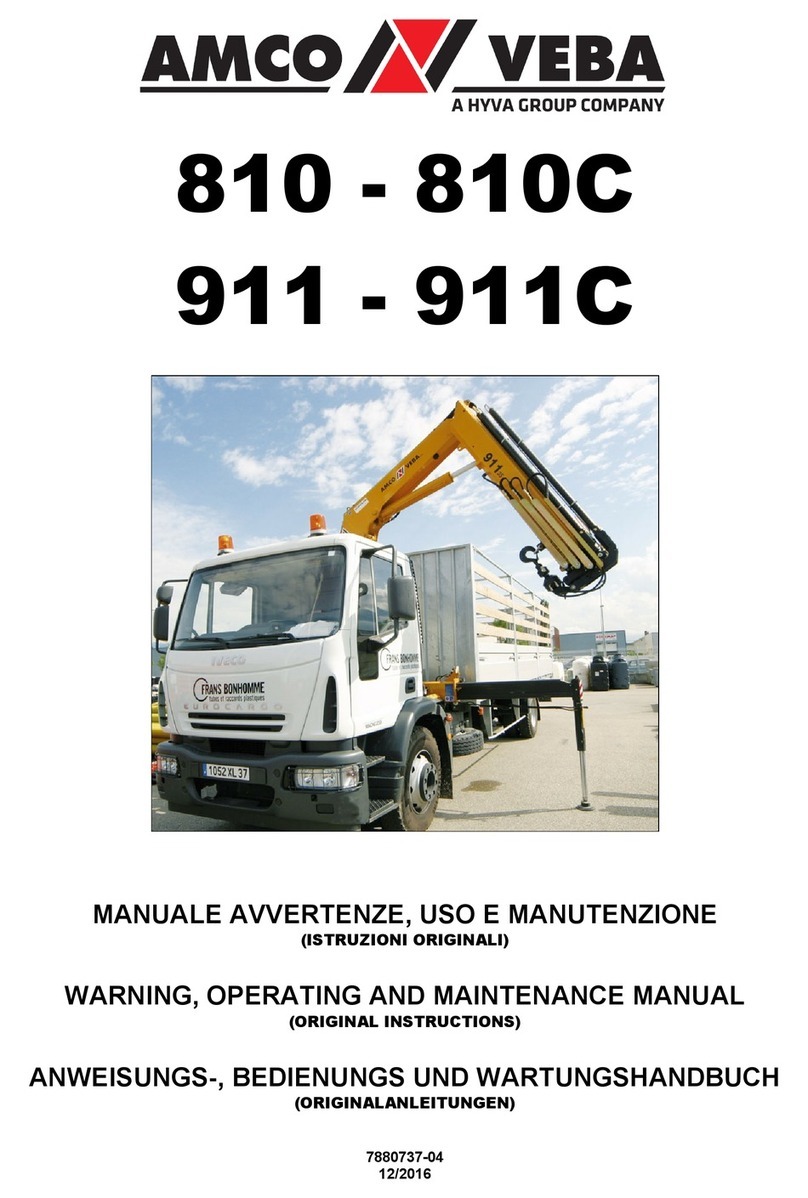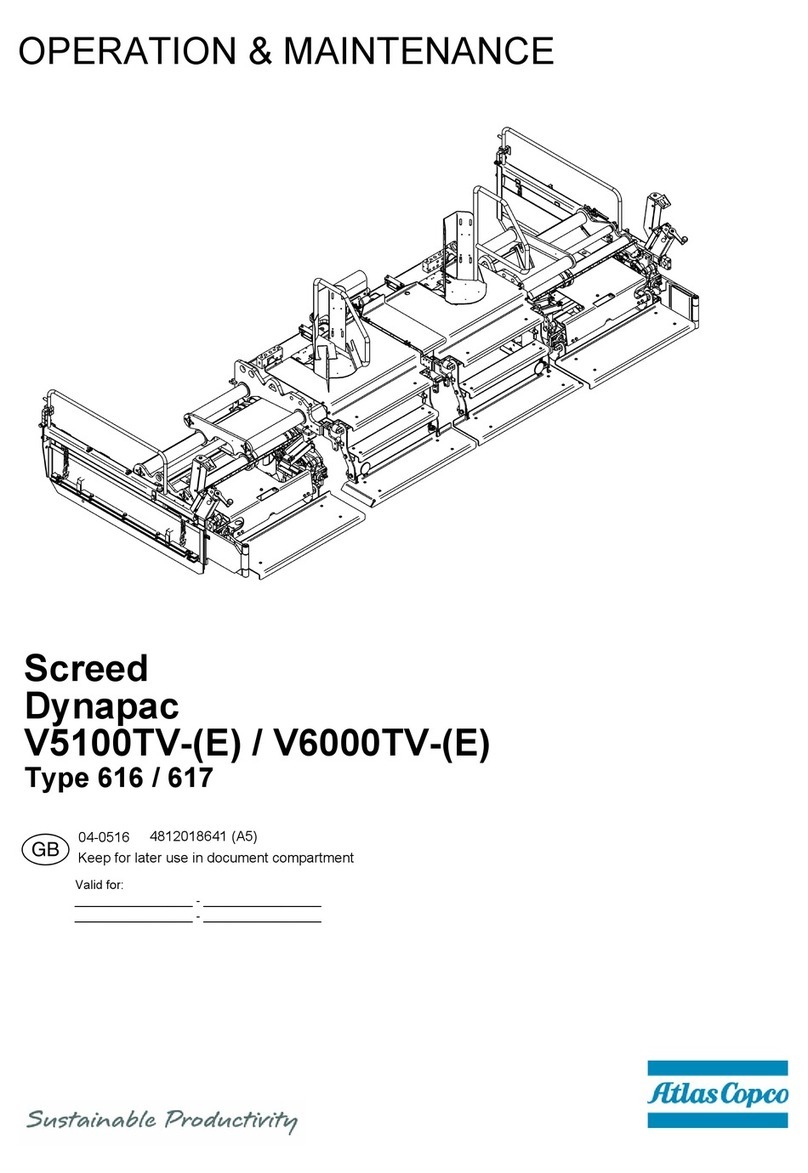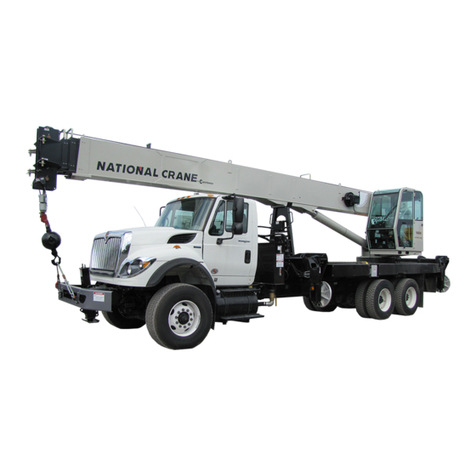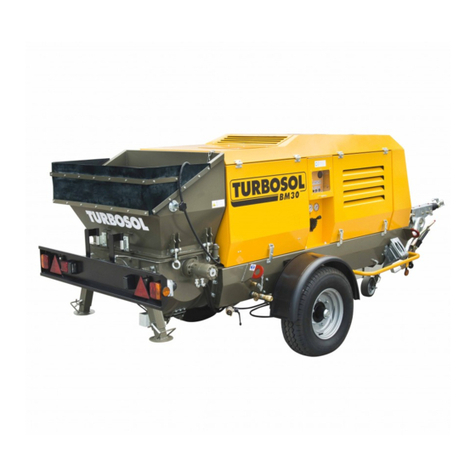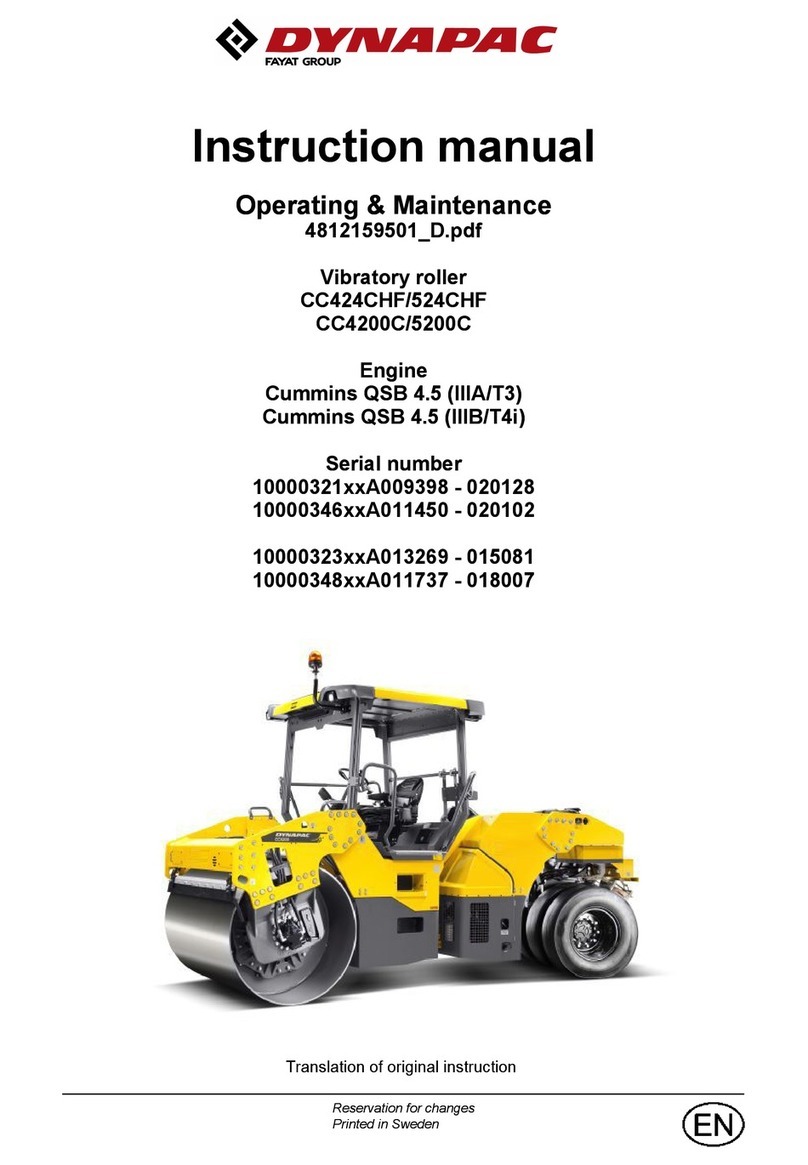
Page 2
4. ASSEMBLY
3. SAFETY
NOTE: ENSURE YOU HAVE READ AND UNDERSTOOD THE SAFETY INSTRUCTIONS AT THE BEGINNING OF THIS SECTION BEFORE YOU
OPERATE THE CRANE.
3.1 SAFETY
3Keep crane, lifting slings, support and beams in good working order and condition. Follow the inspection requirements as
described in Section 6 page 3 Maintenance. Take immediate action to repair or replace damaged parts by contacting your
supplier. Ensure that all accessory lifting devices are suitably certified. If crane is damaged, remove from service immediately.
3Ensure the surface on which the crane is used is level, firm and capable of supporting the weight of the crane with maximum
load - we recommend concrete. Never use the crane on tarmacadam or other soft surfaces.
3Ensure the crane legs and arms are locked before use and that the adjustable rods are screwed down to the floor.
3Keep children and unauthorised persons away from the working area.
3Keep working area clean and tidy, free from unrelated materials and ensure that there is adequate lighting.
3Ensure that load does not exceed the maximum lifting capacity of the crane. Overloading the crane is dangerous. Where
appropriate, use only the lifting points recommended by the manufacturer of the item to be lifted, e.g. vehicle engine.
3Before lifting the load ensure that the crane jib is in the lowest practical position, that there are no obstacles which may snag
the load whilst it is being lifted and that the area above the jib is clear.
3To avoid injury, be fully aware of your own and other persons locations in relation to the lifting, and lowering, of the load.
3Keep a sound footing and balance, and ensure the floor is not slippery.
3Ensure jib extension locking bolt and nut are in position before lifting.
3Ensure the centre of gravity always remains inside the crane base.
7DO NOT harness the load at an angle or use any attachments not verified as fit for purpose.
7DO NOT allow the load to swing during lifting.
7DO NOT allow the load to drop suddenly. Lower load with care, ensuring that you are fully aware of the condition of the surface onto
which the load is to be placed.
7DO NOT load crane beyond its rated capacity for each specified jib extension position as indicated in Section 2 page 1.
The capacity of the crane reduces as the jib is extended.
7DO NOT position any part of your body beneath the load.
7DO NOT use the crane to move or transport a load other than for repositioning (see 5.1.f). The crane is a lifting device only.
7DO NOT apply any sideways pressure to any part of the crane during lifting or when a load is suspended.
7DO NOT attempt to adjust the safety valve, which has been set and sealed by the manufacturer.
7DO NOT use this product to perform a task for which it is not designed.
7DO NOT use whilst under the influence of drugs, alcohol or intoxicating medication.
7DO NOT climb on the crane.
3When not in use fold the crane down and store in a safe, dry, childproof area.
3This crane is designed for lifting within a garage or workshop environment.
WARNING! Failure to heed safety and warning instructions may result in damage and/or personal injury and will invalidate the
warranty.
WARNING! It takes two people to build the crane. Leave all nuts loose until assembly is complete.
Note: refer to attached parts diagram pages 5 & 6.
Unpack and check against parts lists on pages 5 & 6.
4.1. Fix legs (3) to base (1) use bolts (23) for rear hole, which passes through connecting plates (9) and legs (3). Secure with spring
washers (26) and nuts (27). Put pins (8) into front holes of legs, secure with R clips (38).
4.2. Fit rear castors (15). Use bolts (19) from underneath through base (1) then through support straps (7), secure with spring washers (20)
and nuts (21).
4.3. Fitupright(2).Usebolt(32)washer(26)andnut(27)toxthroughuprighttopholeandsupportstraps(7)rst.Supporttheweightof
the upright (2). Fix bottom of upright (2) with bolts (24).
4.4. Fit adjustable rods (10) into front of base (1), secure with R clips (37).
4.5. Fit handle (17) with bolts (22) and spring washers (20).
4.6. Fit boom (4) use bolt (36) washer (28) and nut (30).
4.7. Fit boom extension (5) use pin (8).
4.8 Fit hook (12), use bolt (33), spring washer (28) and nut (27).
4.9. Fithydraulicramunit(6).Fixbottomrst,usebolt(25),washer(29)andnut(30).Fixthetopoftheramusingbolt(31),washer(29)and
nut (30).
4.10. Tighten all nuts and bolts.
4.11. Bleed hydraulic system: Place the pump handle into the pump socket, ensure the release handle is in the open position and pump
the handle 10-15 times, through the full stroke, thus bleeding from the hydraulic system any air which may have entered the system
during transit.
4.12. How to store: Removethefrontpin(8)fromthelegs(30andliftthemtovertical,tostorethelegsinanuprightposition.Retpin(8)
and R clip (38) through the connecting plate (9) to secure. Adjust the adjustable rods (10) to make sure the crane sits upright.
Original Language Version
© Jack Sealey Limited
5. OPERATION
5.1 OPERATION. (Refer to Section 6.2 (a) regarding inspection before each and every use).
a) Ensure handwheel is in the raise (fully clockwise position).
b) Place handle into pump socket and pump, the jib will raise. Continue to pump until the jib reaches the height at which the load can be secured.
c) Connect the crane hook to the load using a suitable certified sling or support beam. Ensure you are aware of the load weight,
and check that it is within the capacity of the crane (at the jib extension you are using) and the sling or support beam. When removing
engines ensure you know the weight to be lifted. Use only the lifting points recommended by the vehicle manufacturer.
d) Lift only from directly above the load. WARNING! DO NOT LIFT THE LOAD AT AN ANGLE!
e) To lower load, turn release handwheel VERY SLOWLY anti-clockwise avoiding any sudden movement.
WARNING! Do not allow the load to drop suddenly.
f) The crane is not a transportation device but may be used to reposition the load being worked on. To do so, lower load and jib
with care, to the lowest possible point before attempting to move. Do not try to move crane in a sideways direction. The crane is
not designed to support the load indefinitely. When you have repositioned the load, lower the load onto a secure and
appropriate working base, being fully aware of your own and other persons locations in relation to the lowering load.
g) When load has been secured, remove lifting sling, support beam etc. and place crane in a safe location with lifting beam fully lowered.
PH10.V5 Issue: 1 - 02/03/16

